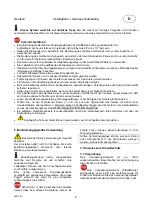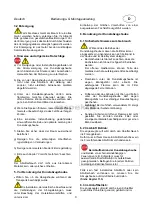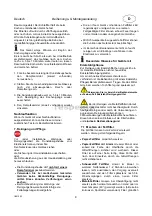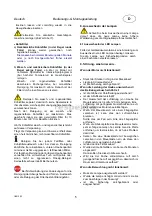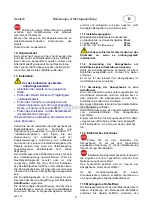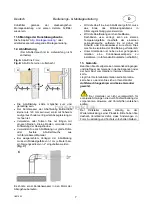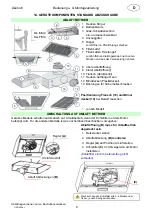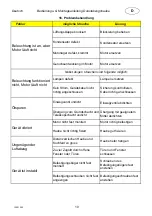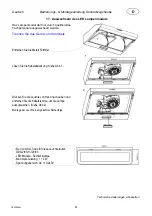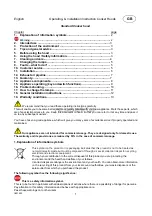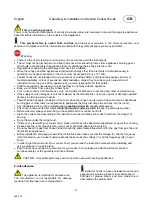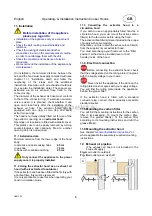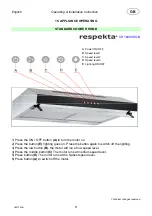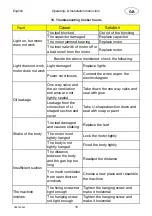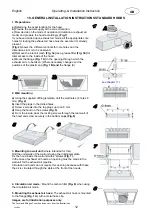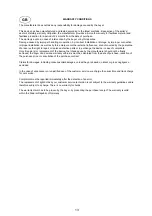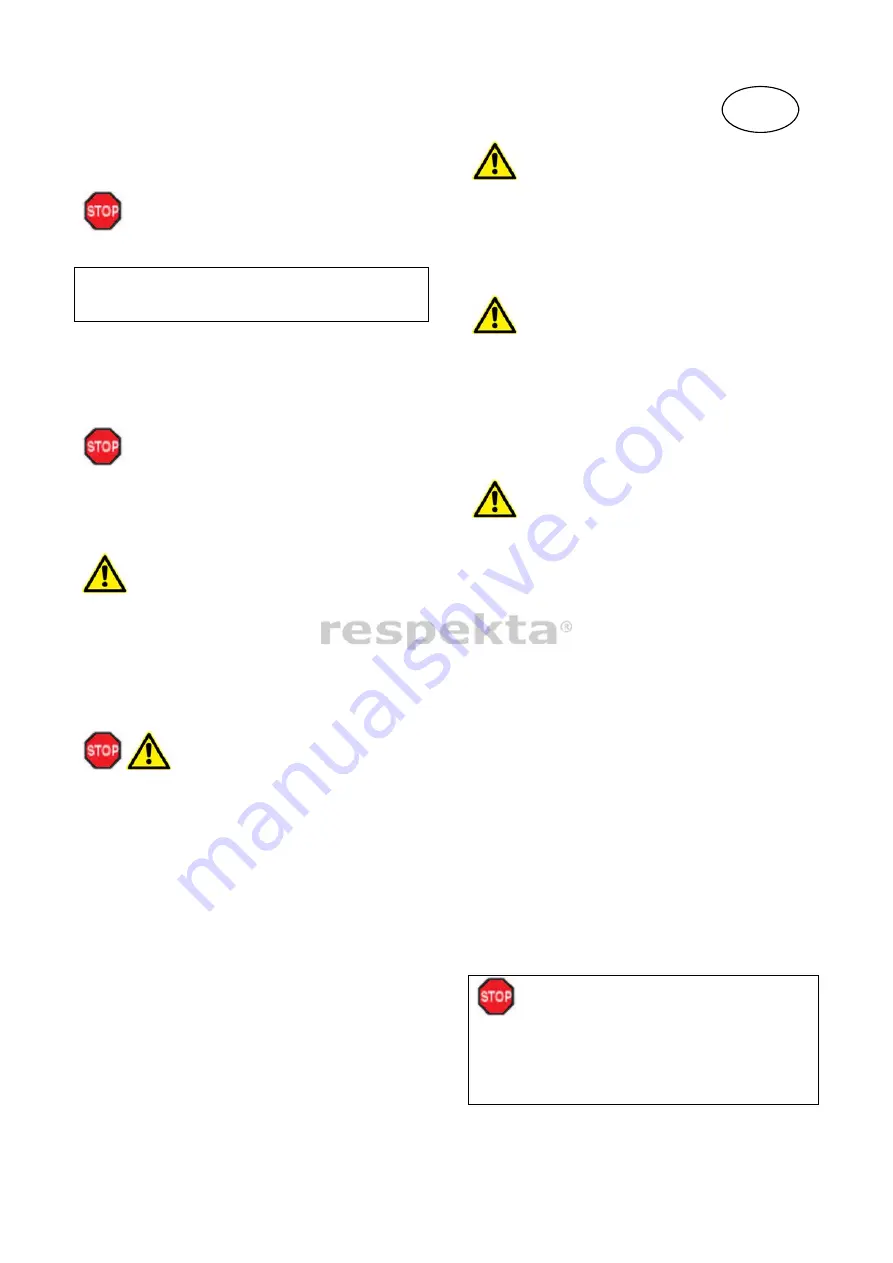
English
Operating- & Installation Instruction Cooker Hoods
fi201203
3
GB
A correctly dimensioned extractor hood creates a
pleasant room climate without producing draughts
and ensures a bearable air humidity of 40-60%.
Make sure no open fire is burning in the
fireplace before you switch on the appliance or there
may be a heavy smoke formation in your home.
Toxic combustion gases can also be drawn from the
chimney or flue, into living rooms. This can be lethally
dangerous!
3. Protection of the environment
3.1 Packing
The packing materials are 100% recyclable. Comply
with local regulations for their disposal.
The packing
materials
(plastic
bags,
polystyrene moulded parts etc) are dangerous for
children. So keep packing material out of the reach
of children.
3.2 Disposal
If this appliance is a replacement for an old
appliance, please dispose of your old appliance
according to the statutory regulations. Prior to
disposal the appliance must be rendered
unserviceable by cutting off the power supply cable.
The appliance is to be sent for disposal to the
responsible collection authorities.
4. Tips and general advice
a) Prior to carrying out cleaning or maintenance work
the power supply to the extractor hood is to be cut
off by removing the supply plug.
b) The air extracted from the hood is not to be routed
over the exhaust air pipeline of the heater or other
non-electric operated appliances.
c) No flambé dishes are to be prepared under the
extractor hood. The open flames could destroy the
hood or even cause a kitchen fire.
d) Never leave pans unwatched when frying because
fat can easily catch fire.
e) Constant maintenance guarantees problem-free
operation and optimal hood performance.
f) If the hood is used together with other non-
electrically operated appliances, the room partial
vacuum must not exceed 4 Pa (4 x 10-5 bar).
g) Make sure that the room is adequately ventilated.
h) Regularly clean encrusted food from appliance
surfaces.
i) Regularly clean or replace the filter.
The exhaust air hose must not be made from or
contain flammable materials.
5. Before using the hood
Ensure that the hood has not suffered damage
during transport.
Installation and connection of the electrical
supply and the exhaust air must be carried out by
experienced
tradesmen
according
to
the
manufacturer’s instructions and in compliance with
the local requirements.
6. Using the hood
6.1 Operating safety information
The grease filter must always be in place
when operating the hood, otherwise grease vapour
can become deposited in the hood and the exhaust
air system.
With gas hobs, take care that hobs are not
operated without cooking utensils.
Parts of the hood can be damaged by the rising
heat from open gas flames.
Flame cooking under the hood is not permitted
due to the fire risk. The rising flame can set fire
to grease deposited in the filter.
Due to the fire risk, frying or cooking with oils and
fats under the hood is only to take place under
constant surveillance.
Attention!
The risk of self-ignition increases
with oils which have been used repeatedly used.
Other activities with an open flame are not
permitted. These could damage the filter or other
parts of the appliance or even start a fire.
6.2 In exhaust air mode:
The extracted air is emitted outdoors via the exhaust
hose.
For this purpose your house must have an exhaust
air shaft or an exhaust air pipeline leading outdoors.
When using the hood in exhaust air mode
and operating with chimney-dependent firing
methods, (e.g. coal oven) care must be taken for
an adequate supply of fresh air in the installation
location. Always discuss this with your responsible
chimney-sweeping specialist.

